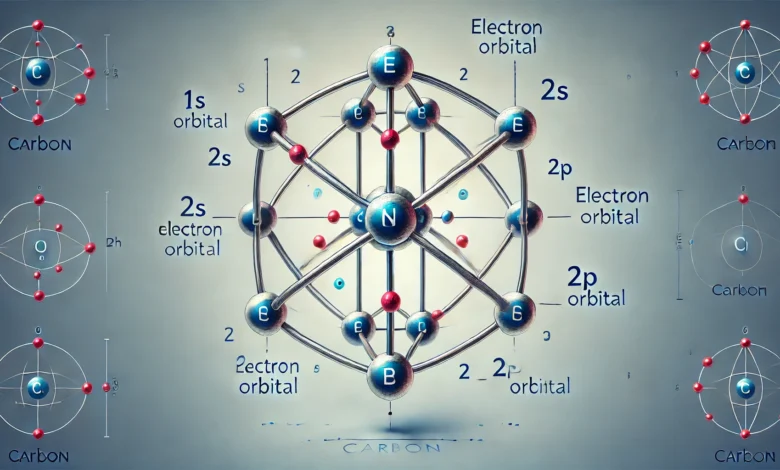Understanding the Electron Configuration of Carbon

The electron configuration of carbon forms the basis of organic chemistry and is critical for understanding the structure of molecules. Carbon, with an atomic number of six, is fundamental to life and possesses bonding properties that allow it to form a wide range of complex compounds. But how do electrons behave in a carbon atom? Let’s explore how its configuration impacts its chemical properties.
What Is Electron Configuration?
Electron configuration describes how electrons are arranged in an atom’s electron shells. These configurations determine how elements interact with each other. In general, electrons fill energy levels in a specific order: from the lowest energy level to higher ones. This filling follows the Aufbau principle, Pauli exclusion principle, and Hund’s rule.
Because electrons occupy orbitals based on increasing energy, knowing this order helps in mapping out configurations for any element. For carbon, it’s especially important due to its role in countless compounds.
Atomic Structure of Carbon
Carbon has six protons and six electrons. Its electron configuration can be derived by assigning these electrons to different orbitals in increasing energy order. The electron configuration of carbon is:
1s² 2s² 2p²
Here’s a breakdown:
- The first two electrons occupy the 1s orbital.
- The next two fill the 2s orbital.
- The final two enter the 2p orbital, which can hold up to six electrons.
This setup gives carbon two unpaired electrons in the 2p orbital, making it chemically versatile.
Why Is the Electron Configuration of Carbon Important?
Understanding this configuration helps explain carbon’s bonding behavior. Carbon can form four covalent bonds by sharing its electrons. This property allows it to create stable chains and rings, foundational in organic molecules like proteins, carbohydrates, and DNA.
Additionally, carbon’s configuration allows it to hybridize—mixing different orbitals to form new ones. For instance, in sp³ hybridization, one 2s orbital and three 2p orbitals combine. This forms four equivalent orbitals that lead to tetrahedral bonding structures, common in organic compounds such as methane.
Transitioning to Hybridization
Interestingly, carbon’s versatility increases with hybridization. In sp² hybridization, one s orbital mixes with two p orbitals. This results in three hybrid orbitals and one unhybridized p orbital, which is seen in double bonds, like those in ethene (C₂H₄). Furthermore, sp hybridization forms linear bonds, such as in acetylene (C₂H₂).
These bonding forms originate from carbon’s electron configuration. Consequently, understanding its electron layout makes it easier to predict molecular geometry and reactivity.
Electron Configuration in Excited State
Although the ground state configuration is stable, in many chemical reactions, carbon’s electrons may become excited. One electron from the 2s orbital may jump to the 2p orbital. This leads to a configuration like:
1s² 2s¹ 2p³
This excited state allows four unpaired electrons, enabling carbon to form four covalent bonds—one of the main reasons carbon is a backbone element in organic chemistry.
Practical Applications
Students, chemists, and biologists often use electron configurations to understand chemical bonding and reactions. Laboratory techniques like spectroscopy also rely on this knowledge. Moreover, predicting reaction pathways or molecular stability begins with understanding atomic configurations.
Therefore, grasping the electron configuration of carbon is more than academic. It’s a practical tool for analyzing how compounds behave in both theoretical and real-world contexts.
Conclusion
The electron configuration of carbon, though simple, holds profound implications. It sets the foundation for carbon’s incredible chemical flexibility. From single, double, and triple bonds to complex structures found in biology, everything stems from its six electrons.
In studying this configuration, students uncover how carbon behaves, how molecules form, and how life itself is structured. It all begins with 1s² 2s² 2p²—the humble electron configuration of carbon.




